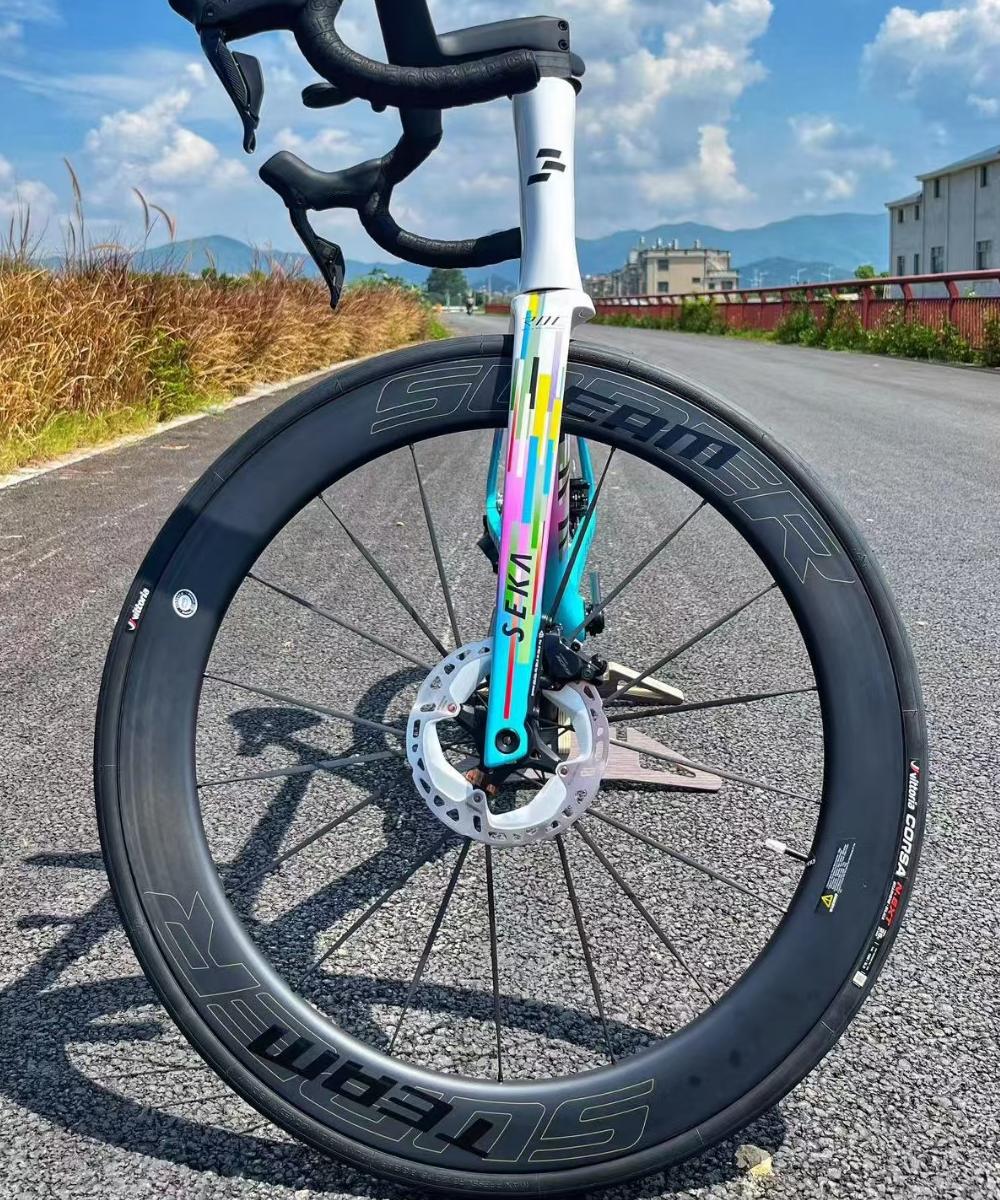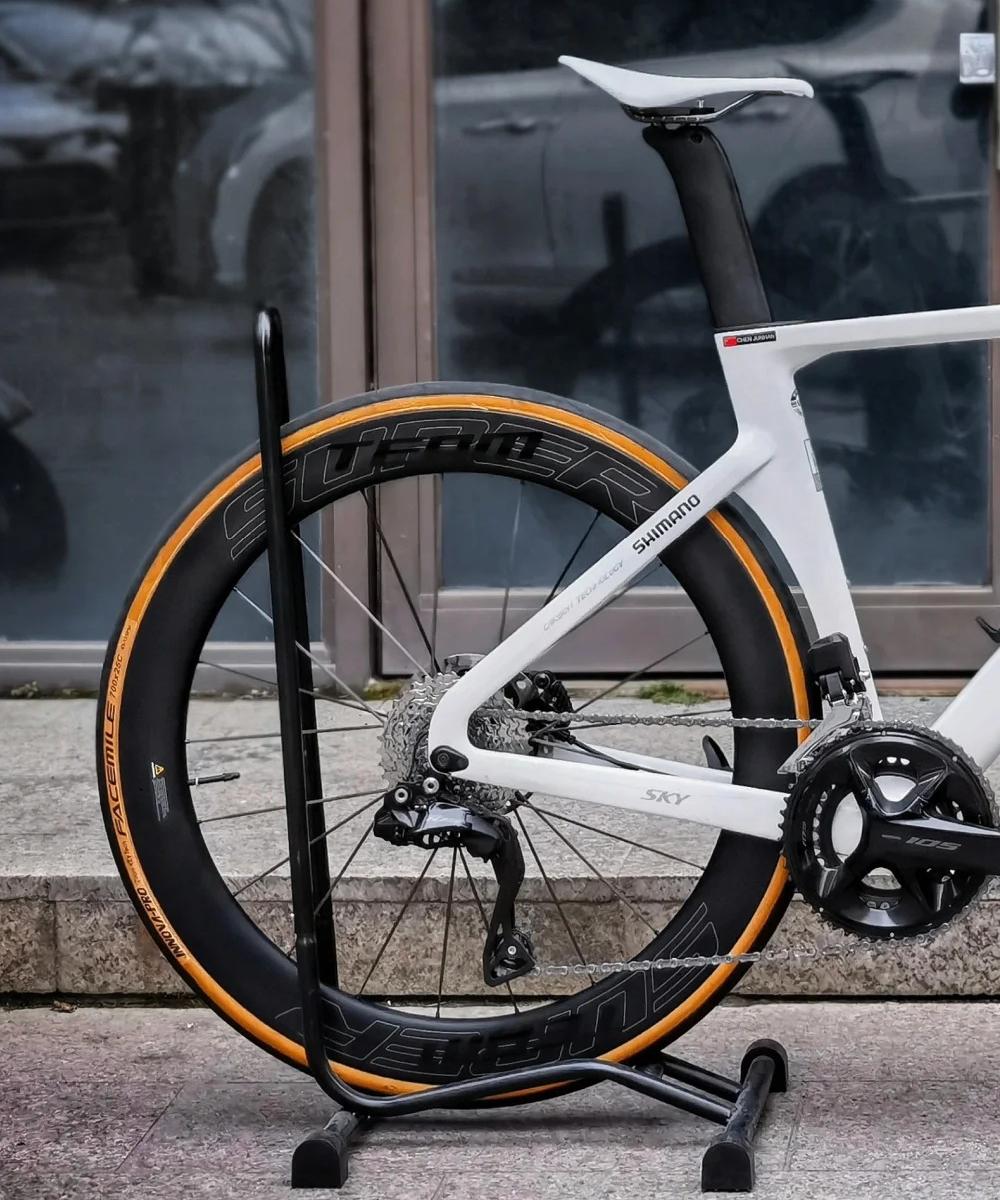How Wheelset Weight Distribution Affects Climbing Efficiency
When evaluating wheelsets for climbing performance, most riders focus on total weight. While lightweight matters, there’s another factor that can be just as important—how that weight is distributed. The location of mass on a wheel can significantly affect how efficiently you can ascend steep grades, accelerate uphill, or maintain momentum during long climbs.
This article explains why weight distribution matters, how to assess it, and what type of wheel characteristics to look for when optimizing for climbing.
1. Not All Grams Are Equal: The Physics Behind It
In physics, the energy required to accelerate a rotating object depends not just on mass, but where that mass is located. This is called rotational inertia or moment of inertia.
For wheels:
Weight at the rim has a greater impact on acceleration than weight near the hub.
A heavier rim increases the energy required to start and stop the wheel's rotation.
Reducing rotational weight (especially at the rim and tire) makes a wheel feel more responsive on climbs.
This means that two wheels of the same total weight can feel very different, depending on where that weight is concentrated.
2. Rim Weight vs. Hub Weight
Rim Weight
Directly contributes to rotational inertia.
Heavier rims slow acceleration and make climbing feel sluggish.
Lightweight rims improve responsiveness, especially when climbing out of the saddle or during short punchy efforts.
Hub Weight
Centrally located.
Has minimal impact on rotational inertia.
Heavier hubs (especially with high-engagement internals) are less noticeable in climbs compared to rim weight.
Conclusion: Always prioritize light rims over light hubs when choosing a climbing wheelset.
3. Spokes and Nipples: Small but Significant
Bladed or butted spokes help reduce rotational mass while maintaining strength.
Using alloy nipples instead of brass can trim precious grams from the rim area.
Fewer spokes (e.g., 20 or 24) also reduce rotational mass, though at the cost of some durability.
Small changes like these add up—especially in the rotating mass closest to the rim.
4. Climbing-Specific Wheel Characteristics
|
Feature |
Why It Matters for Climbing |
|
Shallow rim depth (30–35mm) |
Lower weight and better handling |
|
Low rim mass |
Faster spin-up and easier climbing |
|
Minimal spoke count |
Less rotational mass |
|
Tubeless compatibility |
Saves weight from tubes |
|
Lightweight tires |
Reduces mass at the furthest point out |
5. Real-World Impact on Climbing
Many riders report that a wheelset with lighter rims:
Feels more “lively” and reactive when standing up on climbs.
Responds faster to changes in pace or gradient.
Allows better conservation of energy over long ascents.
Even if total weight savings are marginal, optimized weight distribution (toward the center, not the edges) improves climbing feel, especially over technical or switchback-laden routes.
6. Should You Always Prioritize Climbing-Efficient Wheels?
Not necessarily. Consider:
Rider weight: Heavier riders may benefit more from strong, slightly heavier wheels with better durability.
Terrain: If you only climb occasionally and spend more time on flats or descents, an all-rounder wheelset with deeper rims may suit better.
Riding discipline: Climbers and stage racers benefit most from optimized weight distribution.
Final Thoughts
While chasing grams can be tempting, it’s where those grams are located that truly determines a wheelset’s climbing efficiency. Reducing rim mass, trimming spoke and nipple weight, and focusing on rotational performance—not just static weight—can significantly improve your ride up the mountain.
If you're seeking a high-performance climbing experience, look for wheelsets with low rim mass and balanced design. The result? Faster ascents, less fatigue, and a more responsive bike—especially when the road tilts skyward.


